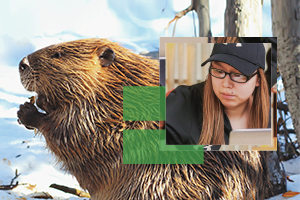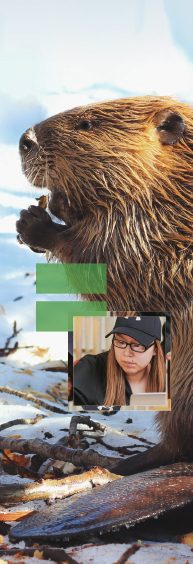Indigenous Strategic Plan 2016 – 2021

Preamble
Mount Royal University is situated in an ancient and storied place within the hereditary lands of the Niitsitapi (Blackfoot), Iyarhe Nakoda, Tsuut'ina and Métis Nations. It is a land steeped in ceremony and history that, until recently, was used and occupied exclusively by peoples indigenous to this place. Through agreements like Treaty 7, a peace treaty negotiated in 1877 between Indigenous and non-Indigenous government representatives, the founding nations of Southern Alberta agreed to share their hereditary lands with newcomers and build a cooperative future together. These agreements, however, have not been honoured. Many of the promises made by non-Indigenous government officials have been broken and others have been ignored entirely. Instead of a future together, what has followed is a future apart. While non-Indigenous people thrived, the original inhabitants of these lands were confined to tiny reserves, prohibited from pursuing traditional practices and forced to send their children to residential schools. A prosperous past has given way to an impoverished present defined by intergenerational trauma, economic and social marginalization, and unacceptably large educational inequities.
Mount Royal University is committed to doing its part to address the legacy of broken promises and rebuild the relationships between Indigenous and non-Indigenous peoples in Calgary and across the country. Since 2013 we have been developing a framework for increasing Indigenous participation in post-secondary education and better integrating Indigenous knowledge, practices, and pedagogies into the curriculum. That original framework document, written by faculty, staff, and administrators, gave rise in 2014/15 to the Indigenous Steering Committee and creation of this document. Guided by an external advisory committee of local Indigenous leaders and experts in education, we sought feedback and insight from all members of the Mount Royal community to craft a strategic plan that meets the needs of all students, Indigenous and non-Indigenous, while outlining a vision for the future of our University. Our goal is to Indigenize Mount Royal University, to respect and embrace Indigenous knowledge and ways of knowing, to integrate Indigenous teachings and practices and to honour Indigenous experiences and identities.
We recognize the importance of this work for both Indigenous and non-Indigenous peoples across the country. A number of national leaders have spoken to this. The Truth and Reconciliation Commission's Calls to Action, released in June 2015, cites indigenization as a crucial means of promoting cross-cultural cooperation and building capacity for intercultural understanding, empathy and mutual respect among all Canadians. 1 University of Winnipeg President and Vice-Chancellor Annette Trimbee and Associate Vice-President of Indigenous Affairs Wab Kinew have stated that indigenization can help fix a major blind spot in Canada's education system; help to better prepare all students, Indigenous and non-Indigenous, to graduate as employable, active citizens and address the socio-economic disparities evident in society today. 2 President of the University of Saskatchewan, Peter Stoicheff, describes the indigenization of universities as 'the most urgent issue of our time' and our response to it 'will define whether or not we can say we have fulfilled the mission of the modern university.' 3
It is work that will take considerable time, effort and resources from across campus and will require the type of cross-cultural collaboration that Treaty 7 was intended to produce almost a century and a half ago. The Indigenous Strategic Plan therefore represents not an endpoint but a beginning, the first step in a long journey of transformative change.
1 Trimbee, Annette, and Wab Kinew. 2015. "Why Canada's Universities Should Mandate Indigenous Courses". The Globe And Mail. http://www.theglobeandmail.com/opinion/canadasuniversities-shouldmandate-indigenous-courses/article27670152/.
2 Truth and Reconciliation Commission Of Canada: Call To Action. 2015. Winnipeg, Manitoba: Truth and Reconciliation Commission of Canada. http://www.trc.ca/websites/trcinstitution/File/2015/Findings/Calls_to_Action_English2.pdf.
3 University of Saskatchewan, 2015. 'Installation Address Installation Address - President's Leadership Team - University Of Saskatchewan'. http://www.usask.ca/leadershipteam/president/installation.php.
Mount Royal University's Vision
An exceptional undergraduate educational experience.
Indigenous Strategic Plan Mission
Mount Royal University is committed to the academic and personal success of students by meeting the educational needs of all Indigenous Peoples.
Guiding Principles
- We honour and uphold the commitment to Indigenous education.
- We recognize, value and apply Indigenous knowledge, culturally responsive pedagogies and practices.
- We value partnerships with all Indigenous communities and will align our ethical practices and protocols.
- We are committed to efforts and initiatives that build reconciliation based on the Truth and Reconciliation Commission's Call to Action.
- We are committed to ongoing mutual learning and growth, and understanding that this living process will have no 'finish' or 'end' date.
Goals
- Goal 1: Indigenizing Mount Royal University
Cultivate respectful and welcoming environments that prevail over the legacy of colonization
- Goal 2: Culturally respectful Indigenous research
Foster respect for Indigenous ways of knowing and knowledge-production and increase capacity for Indigenous scholarship
- Goal 3: Bridge-building with Indigenous education stakeholders
Build strong relationships by forging mutually supportive and productive partnerships with all stakeholders in Indigenous education

Goal 1: Indigenizing Mount Royal University
Cultivate respectful and welcoming environments that prevail over the legacy of colonization
Strategies
Communication
- Develop an ongoing process to clearly articulate and communicate the underpinnings and philosophy of the Indigenous Strategic Plan.
Awareness and Education
- Create a protocol resource that outlines best practices and procedures for recognition of territory, engaging elders, hosting events, and incorporating cultural practices and knowledge.
- Create professional development opportunities for employees to promote awareness and education of Indigenous Peoples and cultures.
- Create programs and services for all students to promote awareness and education of Indigenous Peoples and cultures.
Institutional Change
- Address the recommendations of the Call to Action by the Truth and Reconciliation Commission by creating actions and timelines in each goal of the Indigenous Strategic Plan.
- Develop a process to recruit, retain, and promote Indigenous employees to increase the numbers to a level that is representative of the provincial population.
- Develop and include Indigenous protocols and practices in university ceremonies and functions such as convocation, academic conferences, and facility openings.
- Garner the monetary resources to implement the action plans of the Indigenous Strategic Plan
Environmental Change
- Incorporate physical representations on campus that reflect the commitment and relationship to the Indigenous communities such as signs, art installations, teepees, and flags.

Goal 2: Culturally respectful Indigenous research
Foster respect for Indigenous ways of knowing and knowledge-production to increase capacity for Indigenous scholarship
Strategies
Research Protocols and Partnerships
- Develop an Indigenous research policy that articulates the rationale for a separate Indigenous research policy, what constitutes 'Indigenous research,' guiding principles/philosophies, and Indigenous research ethics.
- Build an accessible network of community-based researchers working in Indigenous fields of study.
- Establish research agreements or memorandum of understanding agreements with Treaty 7 First Nation and Métis communities.
- Provide guidance to Human Research Ethics Board (HREB) reviews to ensure proper consultation on Indigenous research projects.
Supporting Research Capacity
- Seek funding for Indigenous/environment/community-based research.
- Attract and retain faculty doing Indigenous research.
- Build intellectual capacity for Indigenous research methodologies.
Environmental Change
- Build a culture of respectful research.
- Provide opportunities for knowledge sharing and community-based research in collaboration with elders/knowledge holders.
- Review and revise tenure and promotion criteria with a view to fostering culturally respectful Indigenous research.
- Integrate Indigenous research into courses.

Goal 3: Bridge-building with Indigenous education stakeholders
Building strong connections by forging mutually supportive and productive partnerships with all stakeholders in Indigenous education
Strategies
Recruitment and Retention
- Develop an Indigenous student recruitment plan and culturally-appropriate, relevant and meaningful resources.
- Develop an Indigenous student retention plan that considers various levels, interest and support in education and career advancement.
- Establish cultural competency amongst recruitment staff.
- Expand and enhance the Indigenous Housing Program for single students and families.
Community - University Partnerships
- Identify and engage local, regional, national and international Indigenous communities and community organizations.
- Develop partnerships and collaborations with First Nation's colleges and universities.
- Mobilize existing University - Indigenous community partnerships.
- Prioritize and promote short-term educational offerings of interest to Indigenous learners.
External Partnerships
- Engage industry stakeholders to present opportunities to support Mount Royal's proven initiatives and programs, capital projects and spaces.
- Promote and pursue relationships with all levels of government.
- Establish networks and relationships with national champions of Indigenous learning.
- Engage specific stakeholders who can be allies in supporting Indigenous students in developing key skills, abilities and competencies.
- Create opportunities for speaking, co-curricular learning and extended learning for Indigenous students.
- Develop appropriate child care services for Mount Royal's Indigenous students.

Goal 4: Supporting Indigenous learners
Work with our communities to enhance the academic, personal and cultural experience of Indigenous learners
Strategies
Cross-Cultural Awareness and Skills
- Develop a shared, living, list of community leaders across Treaty 7 and urban Indigenous communities that act as learning resources.
- Develop learning objectives and sessions.
- Foster a broad variety of cross-cultural connection-building initiatives throughout campus.
Community Relationships
- Instigate and maintain consistent outreach contact across Treaty 7 and urban Indigenous communities; build these into work plans.
- Send consistent invitations to participate in Mount Royal community work and events.
- Build relationships at many points across the institution; share these resources so that resources are not siloed.
Youth and their Communities
- Host events and activities that are welcoming and engaging across a broad age range.
Access to Spiritual, Emotional, Physical and Intellectual Resources
- Develop and offer services and resources that are designed to be holistic, welcoming, accessible and easily navigable.
Cultural Balancing Services
- Provide culturally appropriate physical, emotional and spiritual resources.
- Communicate clearly to students regarding available resources and protocols.

Goal 5: Respectful and inclusive curricula and pedagogies
Promoting culturally responsible and respectful curricula that integrates Indigenous pedagogies and ways of knowing
Strategies
Indigenization of the Curriculum and Student Learning
- Increase the integration of Indigenous content, resources and pedagogies in curriculum across MRU including field experiences, service learning, practica, clinicals and work experiences.
- Establish completion of three credits of Indigenous content coursework as a graduation requirement.
- Develop Indigenous content courses in each program and faculty that meet the graduation requirement.
- Establish a university-wide committee to vet current and future courses for designation as Indigenous content coursework which satisfies the graduation requirement.
- Create a range of Indigenous content modules and courses for use by programs to satisfy the three-credit graduation requirement.
- Increase the number and diversity of Indigenous field schools, including field schools for faculty and administrators as a form of professional development.
- Develop Indigenous languages curricula in collaboration with Indigenous communities and other post-secondary institutions.
- Develop an Indigenous Studies major as well as minors and concentrations that complement other majors.
- Create student/faculty exchange opportunities as a means of deepening understanding of Indigenous issues and ways of knowing.
Faculty Development
- Develop a multi-pronged professional development strategy for faculty related to indigenization of curricula and pedagogy and Indigenous ways of knowing.
- Establish the position of Academic Director, Indigenization, in the Office of the Associate Vice-President, Teaching and Learning, to provide leadership in the areas of curricula, research, and professional development.
Enrolled Indigenous Students
- Develop complete data regarding Indigenous students (e.g., number, distribution, academic standing, achievement, persistence, graduation rates) to inform evidence-based decisions.
- Develop first-year programming for Indigenous students that uses academic learning communities to promote success and excellence in degree programs.
- Create means of sustaining a learning community throughout Indigenous students' Mount Royal experience.
- Develop opportunities for Indigenous students and alumni for career, work and study.
Indigenous Students seeking Admission
- Restructure the Indigenous Education Program to focus on academic upgrading.
- Develop an Indigenous Transition Year Program (first-year university-level coursework) to provide pathways into Mount Royal degrees.
- Launch dual credit initiatives with Indigenous high school students to provide learners with advance credit and build confidence for university study.
- Explore feasibility of on-reserve course delivery as a means of supporting transition to university, building relationships and advancing excellence in language and cultural coursework.



